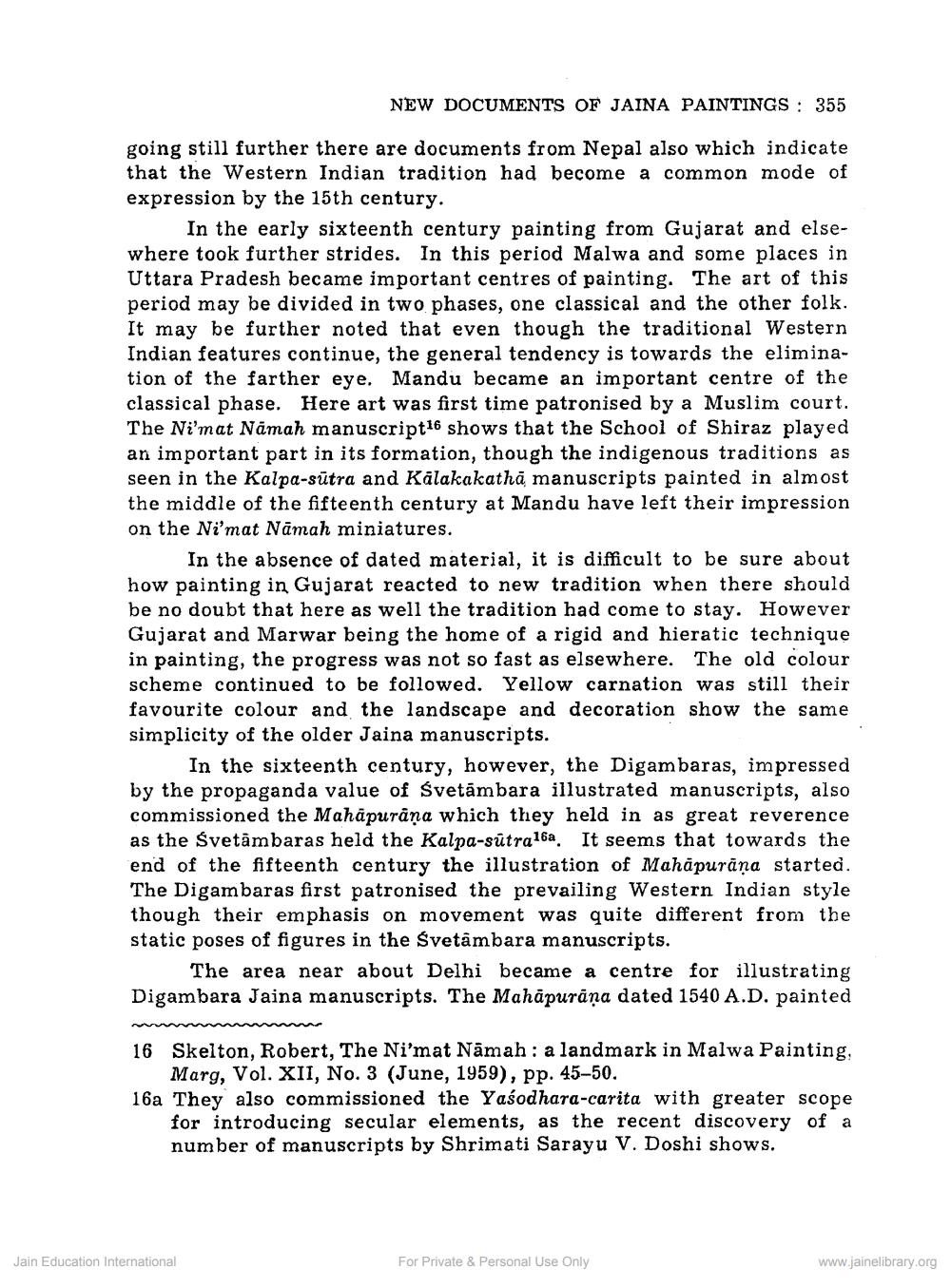Book Title: New Documents of Jaina Paintings Author(s): Moti Chandra, Umakant P Shah Publisher: Z_Mahavir_Jain_Vidyalay_Suvarna_Mahotsav_Granth_Part_1_012002.pdf and Mahavir_Jain_Vidyalay_Suvarna_ View full book textPage 8
________________ NEW DOCUMENTS OF JAINA PAINTINGS: 355 going still further there are documents from Nepal also which indicate that the Western Indian tradition had become a common mode of expression by the 15th century. In the early sixteenth century painting from Gujarat and elsewhere took further strides. In this period Malwa and some places in Uttara Pradesh became important centres of painting. The art of this period may be divided in two phases, one classical and the other folk. It may be further noted that even though the traditional Western Indian features continue, the general tendency is towards the elimination of the farther eye. Mandu became an important centre of the classical phase. Here art was first time patronised by a Muslim court. The Ni'mat Namah manuscript16 shows that the School of Shiraz played an important part in its formation, though the indigenous traditions as seen in the Kalpa-sūtra and Kalakakathā manuscripts painted in almost the middle of the fifteenth century at Mandu have left their impression on the Ni'mat Namah miniatures. In the absence of dated material, it is difficult to be sure about how painting in Gujarat reacted to new tradition when there should be no doubt that here as well the tradition had come to stay. However Gujarat and Marwar being the home of a rigid and hieratic technique in painting, the progress was not so fast as elsewhere. The old colour scheme continued to be followed. Yellow carnation was still their favourite colour and the landscape and decoration show the same simplicity of the older Jaina manuscripts. In the sixteenth century, however, the Digambaras, impressed by the propaganda value of Svetambara illustrated manuscripts, also commissioned the Mahāpurâna which they held in as great reverence as the Svetāmbaras held the Kalpa-sūtra 16a. It seems that towards the end of the fifteenth century the illustration of Mahapurāņa started. The Digambaras first patronised the prevailing Western Indian style though their emphasis on movement was quite different from the static poses of figures in the Svetambara manuscripts. The area near about Delhi became a centre for illustrating Digambara Jaina manuscripts. The Mahapurāņa dated 1540 A.D. painted 16 Skelton, Robert, The Ni'mat Namah: a landmark in Malwa Painting, Marg, Vol. XII, No. 3 (June, 1959), pp. 45-50. 16a They also commissioned the Yaśodhara-carita with greater scope for introducing secular elements, as the recent discovery of a number of manuscripts by Shrimati Sarayu V. Doshi shows. Jain Education International For Private & Personal Use Only www.jainelibrary.orgPage Navigation
1 ... 6 7 8 9 10
